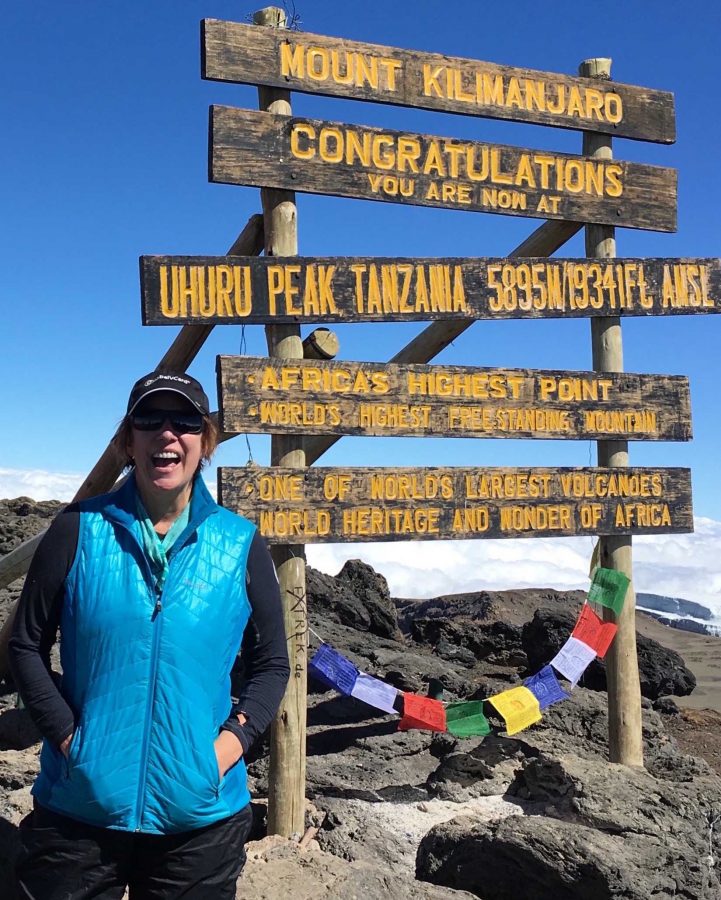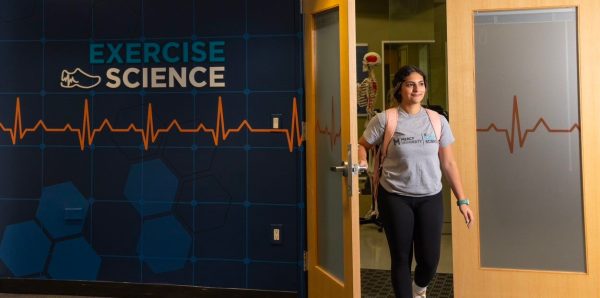Striving To Reach The Top
Approaching the summit, after hiking since midnight, Edie Magnus kept repeating three words to herself.
“Just keep going. Just keep going.”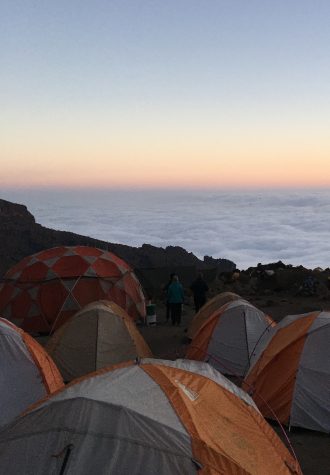
You got this.
As she and the group of women reached the top, there were many tears, smiles, and sighs of accomplishment. With not much time left to admire the gorgeous scenery, she sent her husband a message.
“Honey, I did it.”
Magnus, who is the Executive Director of Media and Innovation at Mercy College, braced the big climb up Mount Kilimanjaro.
“The group was leaving on my birthday; it was like the universe was telling me I have to go on this trip,” said Magnus.
Mount Kilimanjaro, with its three volcanic cones, Kibo, Mawenzi and Shira, is a dormant volcano in Tanzania. It is the highest mountain in Africa and rises approximately 4,900 meters from its base to 5,895 meters above sea level.
The entire climb is four to five days, traveling from camp to camp. Each day, the group climbed between four to eight hours a day.
“I’m a slower climber, so it took me longer.”
Kilimanjaro is the highest mountain in Africa at 19,341 feet (5,895 meters), but it isn’t a mountain in a traditional sense. It’s a giant stratovolcano that began forming about one million years ago and is composed of many layers of hardened volcanic ash, lava, pumice and tephra — fragmental material that is the fallout from a volcanic eruption.
The mountain encompasses a wide variety of ecosystems, including tropical jungle, savannah, and desert to montane forests, subalpine plants, and the alpine zone above timberline.
Kilimanjaro has a large variety of forest types that harbor 1,200 vascular plant species. Montane Ocotea forests occur on the wet southern slope. Cassipourea and Juniperus forests grow on the dry northern slope. Subalpine Erica forests at 13,451 feet (4,100 meters) represent the highest elevation cloud forests in Africa.
Magnus didn’t so much choose to go climb Mount Kilimanjaro, but was chosen by a group of people to join the climb. She was looking for a challenge, and this opportunity surprisingly came calling. It gave her the opportunity to fundraise for a non profit organization that she cares for deeply as well – Shatterproof.
Magnus is on the board of media advisors for Shatterproof, which uses this as a platform to voice those who struggle with addiction. Shatterproof is a national organization committed to protecting loved ones from addiction to drugs and alcohol and ending the stigma and suffering of those affected by this disease.
Magnus found herself doing this climb to prove to herself as well as her siblings that everything will be okay, and it was all worth the climb.
“Just keep going.”
***
As Magnus was climbing, battling not only the conditions but the struggle inside her own head, her thoughts turned to her siblings, Eleanor and Billy. She lost both to addiction, and found the organization was a helpful way of getting the support she needed. Her sister, Eleanor, passed in 2013, and her brother Billy in 2006, both losing their battle at the early age of 46.
Magnus believed this climb helped her open her mind and let out the deep feelings she had about her tragic losses. She realized she was very sad for many years about her siblings passing and that she had to overcome the depression that for some could control their lives.
“Loss doesn’t have to define anyone, and they can channel it in a way that allows them to come out on the other side victorious,” said Magnus
This climb was about spreading that message, and those who struggle with substance abuse have a chance of coming out on the other side. They can become victorious in their own way – the same way Magnus did when she got to the very top of the summit.
“When you’re up there, there is nothing but you and your mind. You don’t notice it, but you think about everything and anything at that point,” Magnus began to say as she compared the peaks of her siblings addiction to her climb.
“For them, every day must have been like looking up at Kili. The prospect of living drug-free existed almost as taunt and something unattainable… as far away as that summit.”
Magnus began to say that anyone in addiction can feel alone, ashamed, and even hopeless. Their lives undeniably go off the rails, and the path to recovery seems unachievable. They try day in and day out to put one foot in front of the other but their addiction holds them back from going forward.
“Addiction was bigger than they were, and it stayed that way until the end for both of them.”
Magnus is a huge supporter of finding how to get a better handle on treating the disease that is substance abuse, as well as reducing the stigma associated with it so that others dealing with this disease to come out of the shadows to help get that treatment.
People are encouraged not to lose the sight of their goals and keep their eye on the prize. Even though it can sound pretty hollow for some people, they have to remember to Just Keep Going, and that the result will be the most satisfying feeling they will ever experience.
***
In preparation time for the climb, Magnus came to a realization that she didn’t really care about working out. She cared just for the simple fact that she was sad, and still didn’t know how to get past the loss of her two siblings. But that had to change. Magnus prepared herself during the summer months of June through August. The group sent out training exercises that she was able to do.
Magnus did a combination of cardio and weights, and worked the treadmill with weights in her backpack to equal the weight she would carry on her climb. She was also in the gym for five to six days a week throughout the whole summer.
“Just keep going,” she thought. “Just keep going.”
***
Anytime she would look up, there would be the mountain just large and looming over her. When she was an hour away from the summit, she sat down for a brief moment, and just thought, “I’m almost there. I got this. I can do it. I’ll be at the top.”
“It really was rather intimidating to look around or look up,” said Magnus. “During those rare moments when we’d see the summit which was silent, still, and gorgeous in the distance, the prospect of getting up there seemed impossible, almost laughable.”
Every now and then, Magnus would just think to herself, “I have to take a little break.”
She would then hear a little voice, which was her group leader, say, “Edie, no sleeping.”
“It was very difficult. Being up for so long, and then having to just climb up with almost no stopping. That’s something that can wear on anyone.”
But once Magnus reached the very top, the result was unbelievably satisfying and worth the climb.
If a similar challenge were to come along, Magnus said, “I might try something else that would seem random and hard. I also learned that I don’t really like hiking all that much; it’s much too solitary for me,” she said as she chuckled with a smile.
But she wouldn’t climb another mountain, she said with a laugh. It’s those small moments that make her realize that she actually climbed a mountain.
“When small things are hard, like my car getting towed, I think to myself, I climbed Mount Kilimanjaro. So this is nothing.”
Magnus does think that in order to shake one’s life up a little bit, one must go outside of their comfort zone.
“I look back and it feels like a dream. If I didn’t have the pictures, I wouldn’t believe I did it,” said Magnus.
***
Mount Kilimanjaro is said to be a technical climb, but a long walk, which in some cases was said to not be true. One wrong move and you were gone.
There are moments when one is just solitary, even though others are around. Mount Kilimanjaro is said to be 50 percent mental, and no one knows what that means until that person has climbed Mt. Kilimanjaro.
Magnus talked about how this walk was not only done for herself, but also in memory of her siblings. This gave her the opportunity to talk about those who need help. If addiction were talked about more often, her siblings lives, as well as those others might have been able to be saved. This is why she joined Shatterproof ,and this is what they are trying to change.
All people go through something in their lives, that they might not know how to handle for a while, whether it is losing loved ones, coming back from war or a mid life crisis. All the women who were on this trip with Magnus had something in their life.
One woman that stood out to Magnus in particular was a veteran who served five tours overseas in the military. 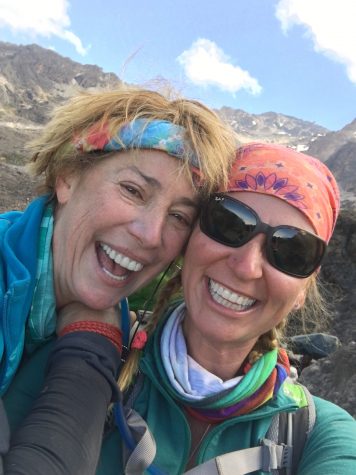 In Afghanistan, she was hit by a mortar. She had a frontal lobe injury causing her to lose part of her brain.
In Afghanistan, she was hit by a mortar. She had a frontal lobe injury causing her to lose part of her brain.
“As we made it to the top, I was almost prouder of her than I was of myself,” said Magnus with a slight smile on her face.
All these women were strangers, but had this bond of going through something and making it through. All had this large chip on their shoulders, but they got through it.
They just kept going.
“Yes, I lost people, but we were all up against something in our lives,” said Magnus.
If someone were to ask, should I climb Mount Kilimanjaro? The answer isn’t all that simple. Different experiences work for different people. Going out and climbing Mount Kilimanjaro just because someone you may look up to did it, doesn’t mean that you should do it. It all depends on who you are and what you put your mind to.
Even most of Magnus’ friends were stunned that she even did this climb. She admits that she wouldn’t have thought about making this climb, until she actually did it.
“Climbing Mount Kilimanjaro is really personal, so if someone wants to go climb that mountain, let them try. It was something I needed.”
Being positive is the key to being successful in anything. Magus learned that challenging herself, and going through with all of it makes everything worthwhile.
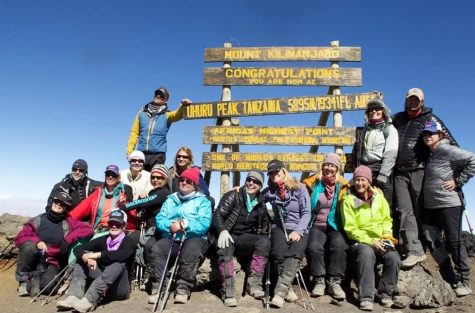 When something seems impossible, don’t let your mind get to you, and tell you that you can’t do it.
When something seems impossible, don’t let your mind get to you, and tell you that you can’t do it.
All you have to say to yourself is, “I got this. Just keep going.”

Weronika is majoring in Media Studies/Radio and Television Production at Mercy College.
Her hobbies are obsessing over television shows, mainly Supernatural...



